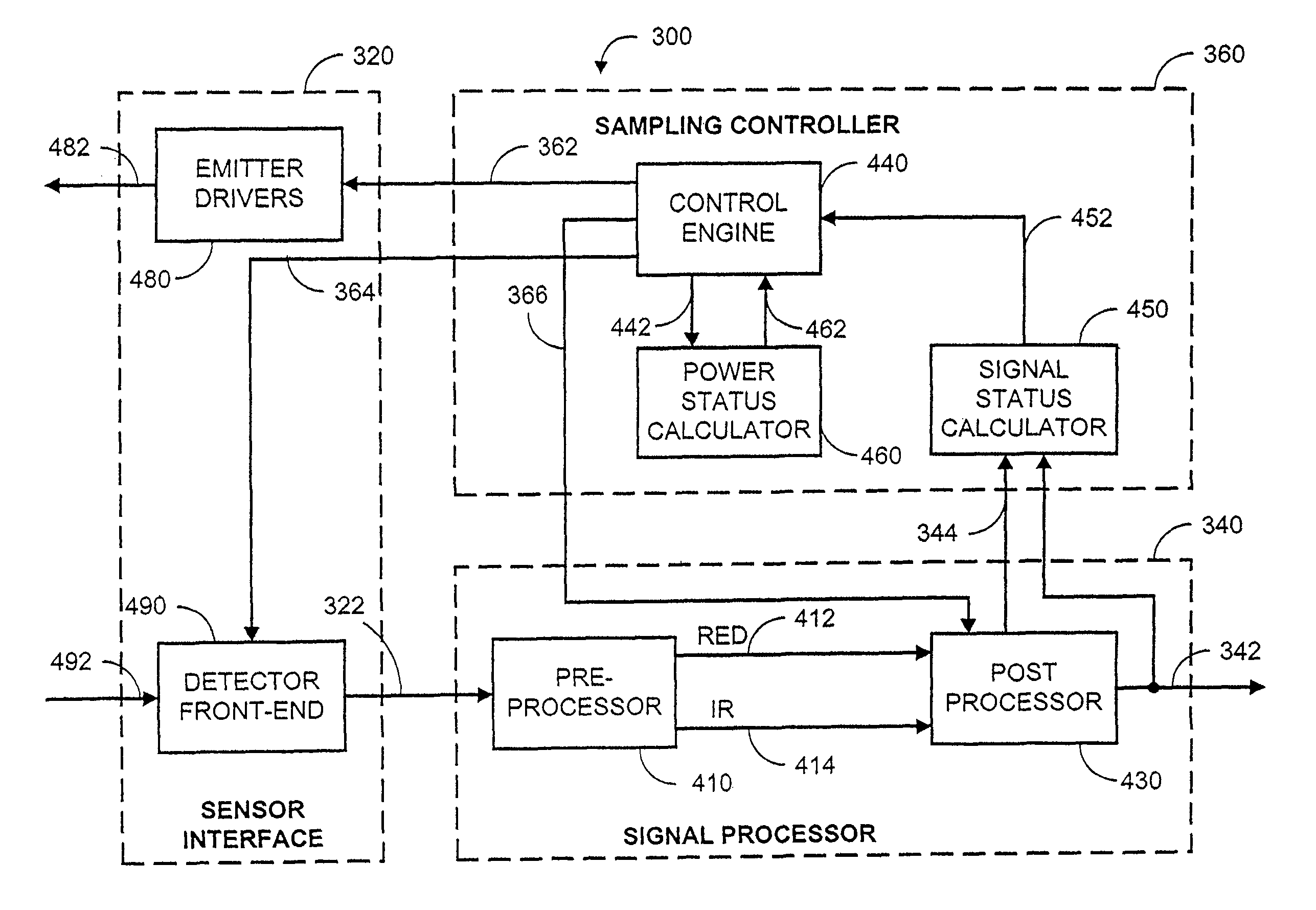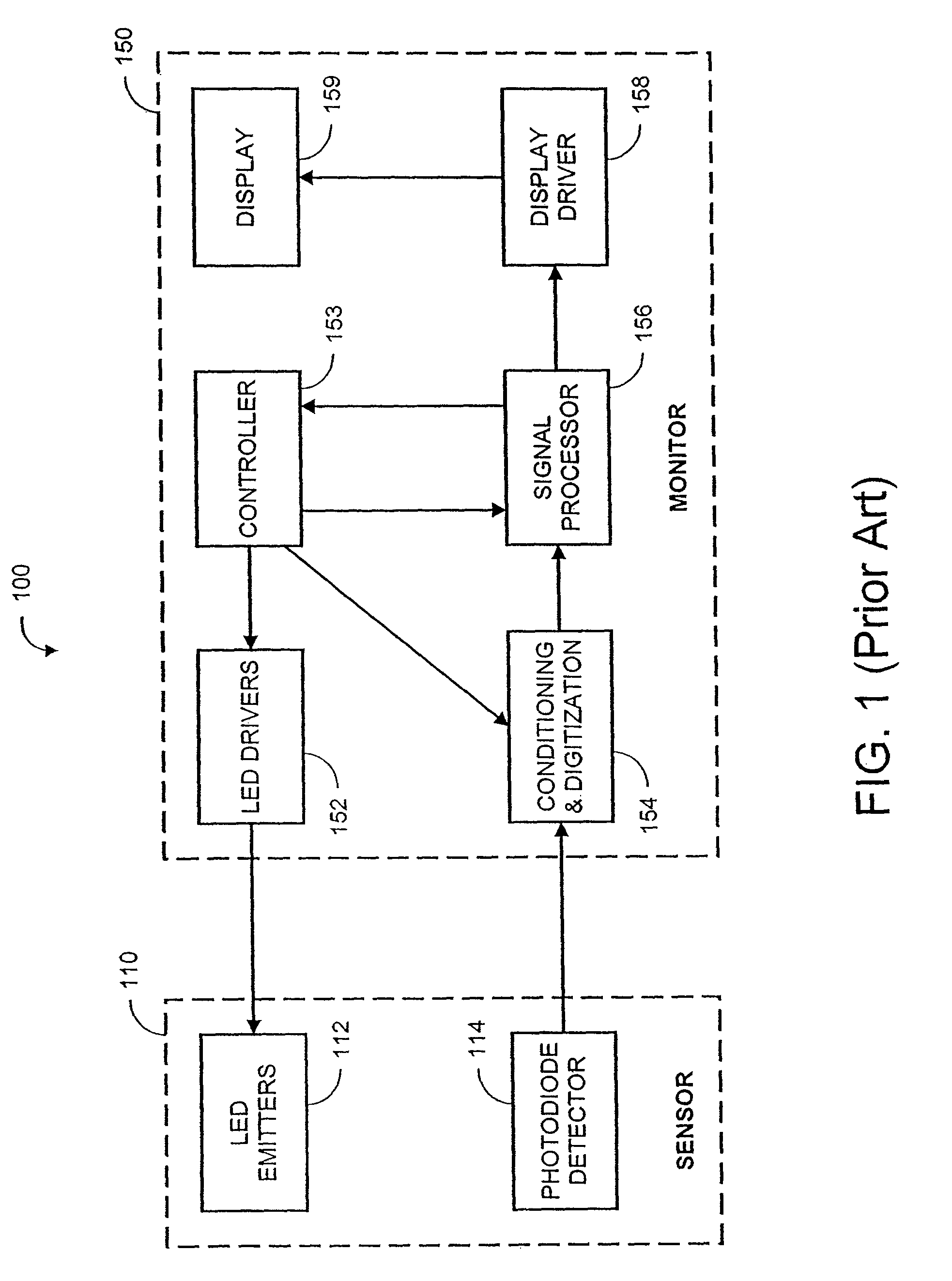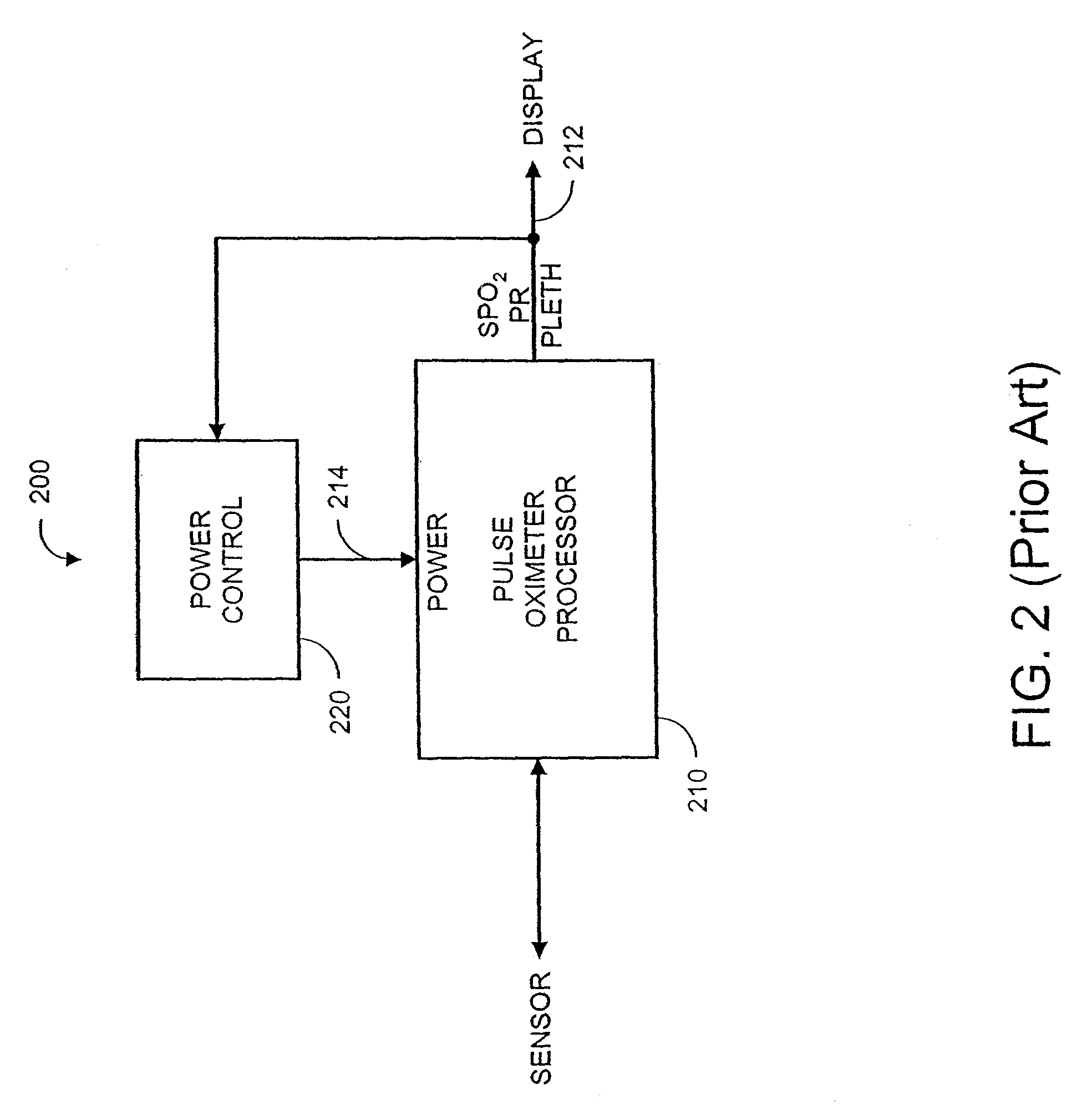Low power pulse oximeter
a pulse oximeter, low-power technology, applied in the field of low-power pulse oximeters, can solve the problems that pulse oximeters cannot afford to miss events, pulse oximeters use consumer electronic sleep mode techniques, etc., and achieve the effect of increasing demand, reducing power and high-performance pulse oximeters
- Summary
- Abstract
- Description
- Claims
- Application Information
AI Technical Summary
Benefits of technology
Problems solved by technology
Method used
Image
Examples
Embodiment Construction
[0029]FIG. 3 illustrates one embodiment of a low power pulse oximeter. The pulse oximeter 300 has a sensor interface 320, a signal processor 340, a sampling controller 360 and a display driver 380. The pulse oximeter 300 also has a sensor port 302 and a display port 304. The sensor port 302 connects to an external sensor, e.g. sensor 110 (FIG. 1). The sensor interface 320 drives the sensor port 302, receives a corresponding input signal from the sensor port 302, and provides a conditioned and digitized sensor signal 322 accordingly. Physiological measurements 342 are input to a display driver 380 that outputs to the display port 304. The display port 304 connects to a display device, such as a CRT or LCD, which a healthcare provider typically uses for monitoring a patient's oxygen saturation, pulse rate and plethysmograph.
[0030]As shown in FIG. 3, the signal processor 340 derives the physiological measurements 342, including oxygen saturation, pulse rate and plethysmograph, from the...
PUM
 Login to View More
Login to View More Abstract
Description
Claims
Application Information
 Login to View More
Login to View More - R&D
- Intellectual Property
- Life Sciences
- Materials
- Tech Scout
- Unparalleled Data Quality
- Higher Quality Content
- 60% Fewer Hallucinations
Browse by: Latest US Patents, China's latest patents, Technical Efficacy Thesaurus, Application Domain, Technology Topic, Popular Technical Reports.
© 2025 PatSnap. All rights reserved.Legal|Privacy policy|Modern Slavery Act Transparency Statement|Sitemap|About US| Contact US: help@patsnap.com



